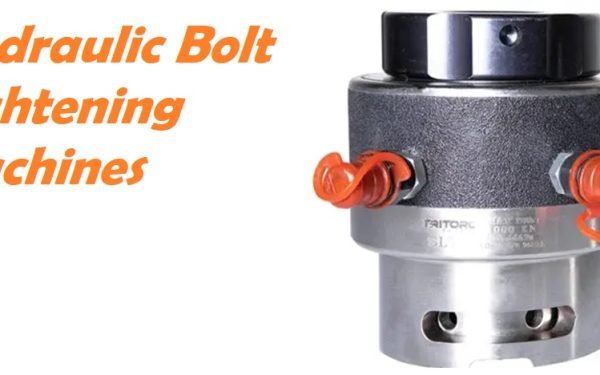Why HDPE Sheets are the Perfect Solution for Your Industrial Needs

In the ever-evolving landscape of modern industry, materials play a crucial role in shaping the way we build, manufacture, and innovate. Among the silent heroes of this realm are High-Density Polyethylene (HDPE) sheets. These unassuming plastic sheets have become indispensable across a wide range of sectors due to their versatility, sustainability, and remarkable properties. In this blog post, we’ll explore the world of HDPE sheets, from their key attributes to their diverse applications and their significant role in promoting a sustainable and innovative future.
Unveiling the Power of HDPE Sheets:
High-Density Polyethylene (HDPE) sheets are derived from a petroleum-based resin known for its exceptional strength-to-density ratio. These sheets are created through a meticulous process that results in a material with a unique set of properties, making them highly sought after in various industries.
Key Attributes of HDPE Sheets:
Chemical Resistance: HDPE sheets are renowned for their outstanding chemical resistance. This attribute makes them the ideal choice for applications that involve exposure to a wide range of corrosive substances. They remain impervious to the harmful effects of many chemicals, ensuring their longevity in demanding environments.
Durability: The durability of HDPE sheets is second to none. They can withstand the harshest environmental conditions, from moisture and UV radiation to extreme temperatures. This durability ensures that they remain reliable and resilient over time.
Recyclability: HDPE is highly recyclable, aligning with the principles of a circular economy. The ability to recycle HDPE sheets reduces the demand for virgin plastic and minimizes the environmental impact of plastic waste.
Hygienic Properties: The non-porous surface of HDPE sheets makes them easy to clean and maintain, making them an excellent choice for applications where hygiene is of paramount importance, such as healthcare and the food industry.
Sustainability: The recyclability, durability, and resistance to environmental degradation make HDPE sheets a sustainable material. They support eco-conscious practices and responsible resource management.
Applications of HDPE Sheets:
Construction: HDPE sheets serve a crucial role in the construction industry, used as moisture barriers, insulation, and as components of insulated concrete forms (ICFs). Their contribution to energy-efficient and sustainable building practices is undeniable.
Agriculture: In agriculture, HDPE sheets find applications in pond liners to prevent water seepage and ensure efficient irrigation. They also play a role in greenhouse coverings, protecting crops and maintaining an ideal growth environment.
Packaging: The packaging industry relies on the strength and chemical resistance of HDPE sheets for a wide range of products, from food containers and bottles to industrial packaging.
Playground Equipment: The durability and UV resistance of HDPE sheets make them an essential material for crafting safe and long-lasting playground equipment, ensuring the well-being of children.
Environmental Solutions: HDPE sheets are integral in environmental applications, serving as landfill liners and caps. Their chemical resistance is a powerful barrier against the leaching of hazardous materials into the surrounding environment.
Food Industry: In the food industry, HDPE sheets are used for cutting boards, food storage containers, and various food processing equipment. Their hygienic properties and ease of cleaning are invaluable in maintaining food safety.
DIY Projects: HDPE sheets find favor among DIY enthusiasts and craftsmen. They can be easily cut, shaped, and molded, making them perfect for a wide range of custom projects, from signs and furniture to home organization solutions.
Outdoor and Marine Applications: HDPE sheets are indispensable in outdoor and marine environments, where they face the challenges of UV radiation, moisture, and harsh outdoor conditions. They are used in boat docks, signage, and more.
PSustainability and Environmental Responsibility:
In an era where sustainability is a pressing concern, HDPE sheets have emerged as eco-friendly champions. Their sustainability is two-fold:
Recyclability: HDPE is highly recyclable, allowing for the production of new materials without the need for virgin plastic. This not only reduces the demand for new raw materials but also minimizes the environmental impact of discarded plastics. The recyclability of HDPE sheets aligns perfectly with the principles of a circular economy, where resources are reused and repurposed.
Durability and Longevity: HDPE sheets’ resistance to environmental factors, including moisture, UV radiation, and temperature fluctuations, ensures a prolonged lifespan. Unlike materials that require frequent replacement, HDPE sheets reduce the need for new products and thus minimize waste generation.
Customization and Versatility:
One of the standout features of HDPE sheets is their versatility. Their non-porous surface is easily cut, shaped, and molded, making them highly adaptable to a wide range of applications. This versatility has found favor among both industry professionals and DIY enthusiasts:
In the construction industry, architects and builders have harnessed the adaptability of HDPE sheets for innovative projects, ranging from artistic architectural installations to structural components.
In the DIY realm, HDPE sheets have become a go-to material for creative projects. From crafting custom signage for personal businesses to creating unique furniture pieces, their adaptability and ease of manipulation have opened the doors to endless possibilities.
Addressing the Hygiene Imperative:
HDPE sheets have made their mark in applications where hygiene is of paramount importance. Their non-porous and easily cleaned surface is a valuable asset in various sectors:
In healthcare facilities, HDPE sheets are used for work surfaces, countertops, and cabinetry. The ability to withstand chemical spills and rigorous cleaning routines ensures a safe and sterile environment for medical professionals.
In the food industry, where hygiene is non-negotiable, HDPE sheets find their place as cutting boards, food preparation surfaces, and various kitchen equipment. They ensure food safety and compliance with stringent hygiene standards.
Outdoor Resilience:
HDPE sheets are not just confined to indoor applications. Their resistance to UV radiation and harsh weather conditions makes them suitable for outdoor use. This makes them a preferred choice for a range of applications:
In outdoor signage and advertising, HDPE sheets are relied upon for their ability to withstand the elements, ensuring that branding and messaging remain visible and intact.
For marine applications, such as boat docks and marina structures, HDPE sheets’ resilience to moisture and harsh environmental conditions ensures longevity and durability.
In conclusion, HDPE sheets have proven to be more than just versatile materials in modern industry. They are drivers of sustainability, adaptability, and innovation. Their silent yet substantial role in diverse applications, from construction and agriculture to packaging and outdoor environments, underlines their significance in fostering a responsible and innovative future. As industries continue to prioritize eco-conscious practices and creative ingenuity, HDPE sheets will remain at the forefront of these efforts, providing enduring solutions that reduce waste, conserve resources, and build a greener, more responsible world.






